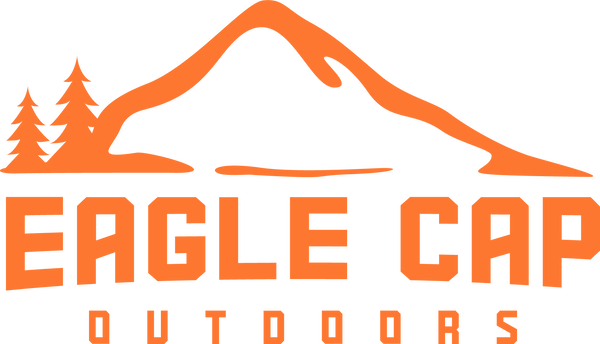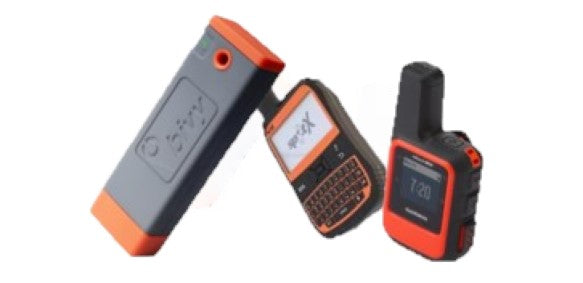
This day and age technology is becoming something we rely on when we go off the grid. Big strides are being made in gear, some of it seems to be unnecessary, whereas some of it really helps keep people safe while on adventures. I think a big piece of gear that gets overlooked while planning back country trips with limited or no cell service is a satellite communicator. Satellite communication used to be something that wasn’t really feasible for the majority wanting to be outdoors due to the costs of the devices and the weight,. Whether going for a backpack trip, a float trip in remote areas, a day hike, hunting or even just a road trip, a GPS communicator is desired. I’ve never been one to think this was something I needed until I started doing more and more in the wilderness. The fact of the matter is, family and loved ones stress and worry regardless of what they tell you while you’re gone and your life isn’t worth a few hundred dollars. A satellite communicator allows you to keep in touch with family with simple messages and could be something that saves your life.
This segment is strictly focusing on bluetooth devices that link with a cell phone in order to send and receive text messages, send locations, and obtain weather reports to give those back home that piece of mind that everything is okay. There were three devices I looked at during this process and ultimately they all operate off the same iridium satellites providing you satellite signal wherever you are in the world.
GARMIN: inReach Mini 2
The first thing that catches your eye is the size. These pack a lot into a small package, very user friendly and straight forward. This device connects to any smart phone through bluetooth and a Garmin app. You can use the inReach without the app, but to access and use all the features this device offers, using the app on your smart phone is more ideal. The app is laid out well and not too complicated to operate, took all of 10-15 mins to get familiar and I was up and running. The device was also very easy to set up out of the box and only took a few minutes to get linked to satellites.
Key features of the inReach:
- Send and receive text
- Get weather reports
- SOS button
- Tracking Topographical Maps
All these features are easy to use through the app or just using the inReach itself. Battery life is great and runs off a charge for quite a while, 336 hours! I would turn the unit on for about 10 mins to send out what I needed, and I looked at maps in the morning and in the evening. The size of the inReach is nice because it is super small and takes up close to no room without adding a lot of weight to your pack.
The inReach mini weighs only 3.5 ounces. You’re probably wondering how the service portion works for this device. Garmin has a tiered plan as follows.
There is an activation fee of $24.99. so when you start and stop the subscription you will be paying the $24.99 each time. Once active you are good for 1 month and then the service will auto renew or you can cancel and activate before you’re next trip/adventure. You can move between plans any time, but if you downgrade to a lesser plan that is effective on the next month. If you are looking for a lightweight two-way satellite communicator that can operate on its own or in sync with your mobile phone and you do not need the battery backup offered by the Bivystick, the inReach Mini is probably the best device for you. It also comes with an SOS function, which is located on the side of the device. If you are ever in a situation where you need to trigger the SOS function, having that function available and easily accessible on the side of the device may be a life-saver.
COST: $399
SIZE: 2.04” x 3.90” x 1.03” (5.17 x 9.90 x 2.61 cm)
WEIGHT: 3.5oz
WHERE TO BUY: Garmin inReach Mini 2
BIVY STICK
 This is a fairly new company that has recently came on the scene and really have a great product to offer. Not many people have heard of them yet, but they are really doing a cool thing with this product. When I first found out about them I was only looking for a satellite communication device. When I dove into finding out more and doing the Bivy Stick review I was surprised. They are primarily app-based, and you can download their app to create a free account. While in the app you can search, for new adventures near you: Trails, Waterways, Climbing, Off Road, etc… All these adventures populate on a map to choose from on the app. This is the same app you would download and use to connect to and activate your Bivy Stick. All of your messaging, tracking, and weather goes through the app. This device will connect via bluetooth with any smart phone. The size on this unit is a little bigger than the inReach and Spot X, the reason being is this also doubles as a battery pack to charge cell phones, head lamps and anything that can be charged off USB. The Bivy Stick weighs 3.35 ounces which is not bad given its battery backup feature. The app is very user friendly and easy to use. Let’s talk about the extra cost associated with the Bivy Stick.
This is a fairly new company that has recently came on the scene and really have a great product to offer. Not many people have heard of them yet, but they are really doing a cool thing with this product. When I first found out about them I was only looking for a satellite communication device. When I dove into finding out more and doing the Bivy Stick review I was surprised. They are primarily app-based, and you can download their app to create a free account. While in the app you can search, for new adventures near you: Trails, Waterways, Climbing, Off Road, etc… All these adventures populate on a map to choose from on the app. This is the same app you would download and use to connect to and activate your Bivy Stick. All of your messaging, tracking, and weather goes through the app. This device will connect via bluetooth with any smart phone. The size on this unit is a little bigger than the inReach and Spot X, the reason being is this also doubles as a battery pack to charge cell phones, head lamps and anything that can be charged off USB. The Bivy Stick weighs 3.35 ounces which is not bad given its battery backup feature. The app is very user friendly and easy to use. Let’s talk about the extra cost associated with the Bivy Stick.
The Bivy Stick retails for $299. The Bivy Stick has one plan that is $19.99 for 30 days of use. There are no hidden costs with the Bivy Stick, for $19.99 you get 10 credits. Each action is a credit… Sending a text equals 1 credit, a weather report equals 1 credit, so on and so forth. You can buy extra credits that end up rolling over as long as you keep paying month-to-month with a data plan. The app also keeps track of usage and you can easily look and see what’s been used and how many credits you have left. This is not something the others do, where you’re kind of left guessing. Very nice when you are in the middle of nowhere. If you are looking for a two-way satellite communicator that not only syncs easily with your mobile phone and offers great maps but also provides a battery charger for your mobile phone, the Bivy Stick is a great option. Not having to carry an extra battery charger makes the Bivy Stick a very attractive choice.
Peace of Mind
More Features, More Fun, More Peace of Mind
- Global satellite coverage (Iridium)
- Send and receive messages via satellite
- Weather forecasts via satellite
- SOS monitoring via satellite (Global Rescue)
- Location tracking and sharing via satellite
- Map display and navigation
- Download offline maps
COST: $299
SIZE: 4.47in x .83in x 1.85in
WEIGHT: 3.35 oz
WHERE TO BUY: Bivy Stick Communication Device
SPOT: SPOT X
Spot X was one of the first on the scene with affordable two-way satellite communication and the company provides great products. They have several units to choose from that all keep a person safe in areas cell providers fail. The Spot X is targeting the same market as the inReach Mini 2 and Bivy Stick; all three all offer functionally the same features. When you are looking at all three it comes down to personal preference and what you the buy are looking for in a two-way satellite communication device. The Spot X is on the bigger side and about the same size as a hand-held GPS. The Spot X weighs 7 ounces.
The Spot X is a stand-alone system and doesn’t pair with your phone via Bluetooth. This becomes a bit of a task when you’re trying to eliminate things and save weight and room in your pack. Although it works and gets the job done it is not as use friendly as the Bivy Stick or the inReach Mini 2.
All three devices have data plans to make them work off grid. For all these units to do the same thing, there is a fair amount of difference in the plans. When diving into the cost of these devices, I wanted something that was simple and to the point for the data plan. Below is what Spot provides to its users. There is hidden activation fees that come along with this on a yearly basis. The Spot does not have very good navigation either. You can get out of situations sure, but you do not get a nice topo map to look at, like you do with the others.
I soon determined that Spot wasn’t the devise I wanted to use. For me it wasn’t what I was looking for. For others something like the Spot X could work great and it is the least expensive of the three options. For the things I was going to be doing, this wasn’t going to cut it.
COST: $236
SIZE: 6.54in x 2.9in x .94in
WEIGHT: 7 oz
WHERE TO BUY: Spot X
Conclusion
I chose to go with the Bivy Stick due to the simplicity of the device, as well as the cost of the service plan. My buddies chose to go with the inReach mini 2. You decide, but it would be a great idea to have at least one of these devices in your pack!






